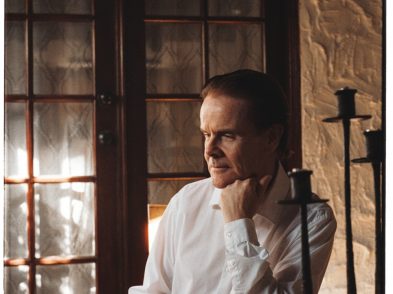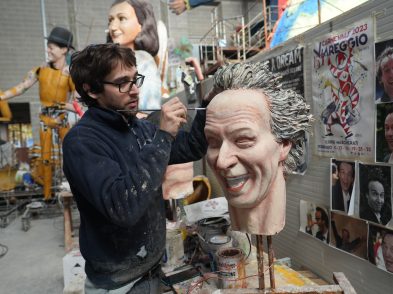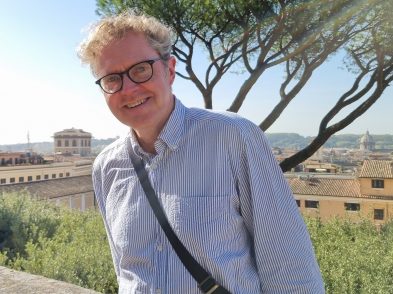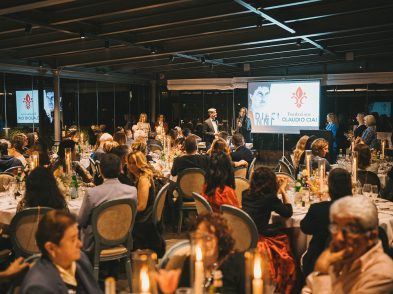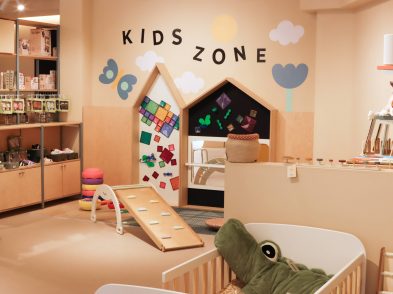In piazza Santa Trinita, the Palazzo Bartolini Salimbeni has stood as an elegant witness to history for over half a millennium. Today, it is home to Prince Prospero Colonna, having been given as a wedding gift to his grandmother Andreina Salina by her father Giovanni Salina in 1910, on the occasion of her marriage to Carlo Luca Torrigiani.
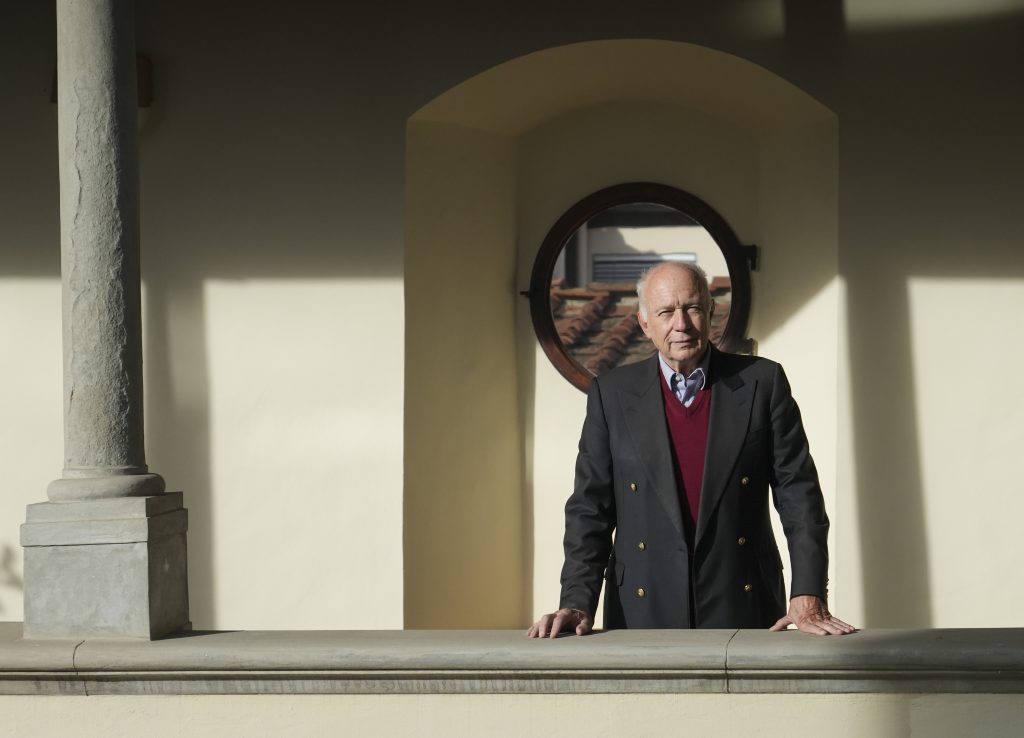
The palazzo was designed by Baccio d’Agnolo, one of the earliest buildings in Florence expressing the High Renaissance style of Rome. It was built in only three years, from 1520 to 1523. At the time, it was criticized by the Florentine public for its “Roman” appearance and legend says that Michelangelo would look the other way whenever he walked by. But the architect made sure that he had the last word. Engraved below the pediment above the door are the words CARPERE PROMPTIUS QUAM IMITARI (easier to criticize than to imitate).
As I take in the room where Prince Colonna is comfortably seated on a sofa, I notice a table laden with family pictures. Apart from photos of his daughters Vittoria, a contemporary artist, and Lucrezia, a lawyer, a photo of a large wedding banquet stands out. It appears like a scene from a movie, but in fact is “the Bologna wedding of my grandmother,” Colonna remarks.
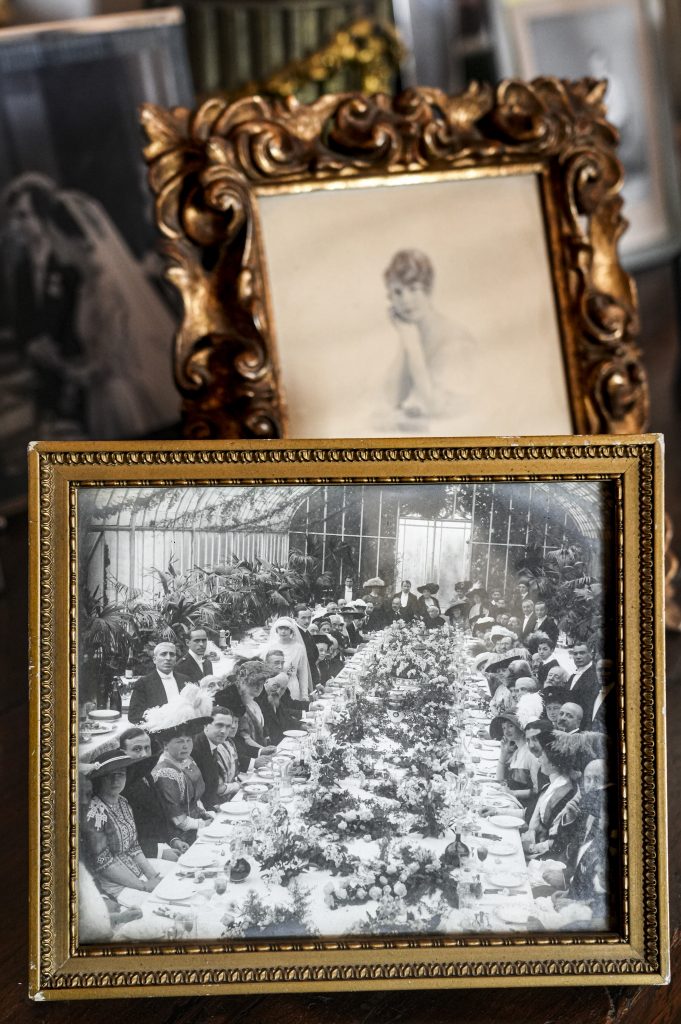
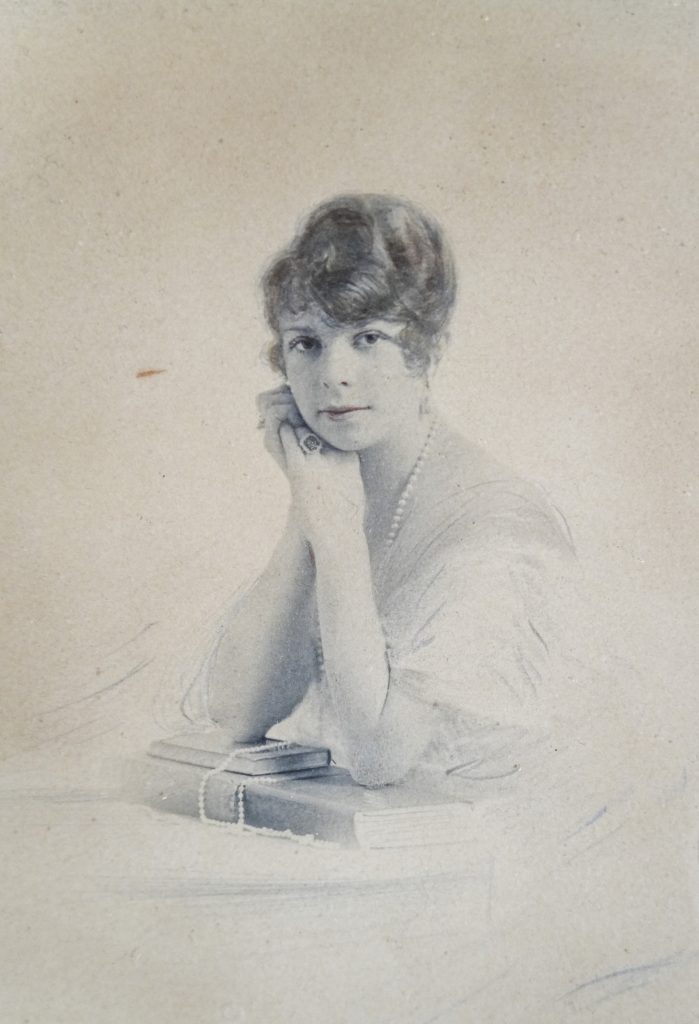
Prospero Colonna, who is about to turn 85, is the thirteenth generation of the great Roman Colonna family, his being the Neapolitan branch of di Stigliano. Among the cardinals and popes, probably the most celebrated of his predecessors are Federico da Montefeltro and Battista Sforza, as well their granddaughter, Vittoria Colonna, who was a close friend and muse to the great Michelangelo Buonarroti. Vittoria was the first Renaissance woman to have a book of poems, Rime, published in 1538.
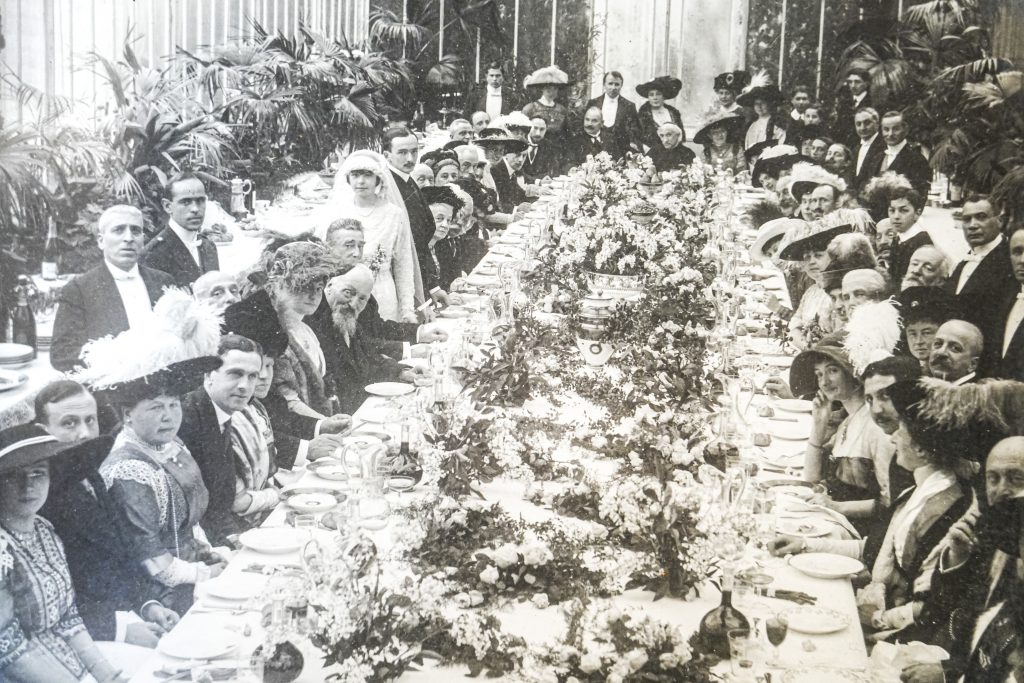
I ask the prince about some of his memories made in this magnificent palace. The most important ones are tied to what Florence went through in the twentieth century: World War II and the Great Flood of 1966. During the war, as a five year-old, he remembers leaving the family’s Castello del Nero in Impruneta and walking to Florence with his father Carlo, mother Simonetta, older sister Giovanna Margherita and baby brother Fabio Marzio, joining his grandmother Andreina right here in this palazzo. The beautiful attic room had been transformed into a barn with chickens, and even a small pig! For little Prospero, one way to pass the time was to compete with his sister to see who would collect the most bombshells in the palazzo’s atrium. “One was still so hot, it burned my hand.” But as the war raged on, they had to move, being so close to the Arno river and the Santa Trinita bridge, which was completely destroyed by German bombing on August 4, 1944. Ultimately, the family settled at the Hotel Baglioni. The owner simply stated that they were family and they stayed there until the end of war.
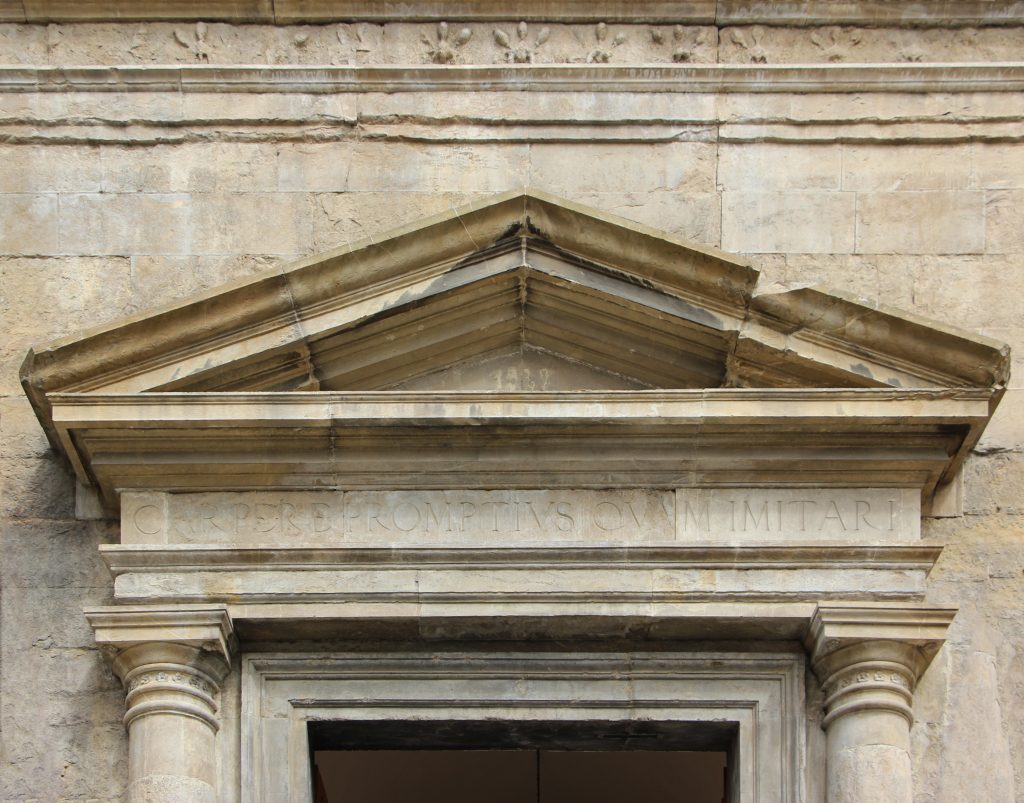
How old were you when the flood took place on November 4, 1966, and what are your memories of that day and the days that followed?
I was 27, having just finished my military service. I woke up to find the ground floor of the palazzo completely flooded and as I looked down into the piazza, towards Palazzo Spini Feroni, I saw an opening in the basement and Ferragamo’s shoes gushing out with the black mud of Arno! I tried catching a few of them and attempted to call Fiamma Ferragamo, but the phone lines were no longer working. I heard the portiere of the palazzo calling out for help and found him down in the cantina, carrying a damigiana of Chianti wine. As I helped him carry it upstairs, the man remarked, ‘I only need to find a dry place where I can sleep and with this, and I am set, even if a universal flood descends upon us all.’ I looked for my Vespa Lambretta, but it was gone. Only a single car was left in the piazza, a car that a German tourist had tied to the signpost…A couple of days after the flood, I went down to the basement to find that all the water had disappeared on its own. There was just an enormous layer of mud. The palazzo must have had a drainage system of some sort that led directly to the Arno, but we never understood how it was designed.
You have recently published a book, Palazzo Bartolini Salimbeni, bello altra modo, written by Matteo Cecchi (Edifir Edizioni Firenze, only available in Italian for now).
Yes, my intention was to share some of the family records about Palazzo Bartolini Salimbeni on the 500th anniversary of its existence, exploring its fascinating history and the fact that it was such a novelty when it was built.
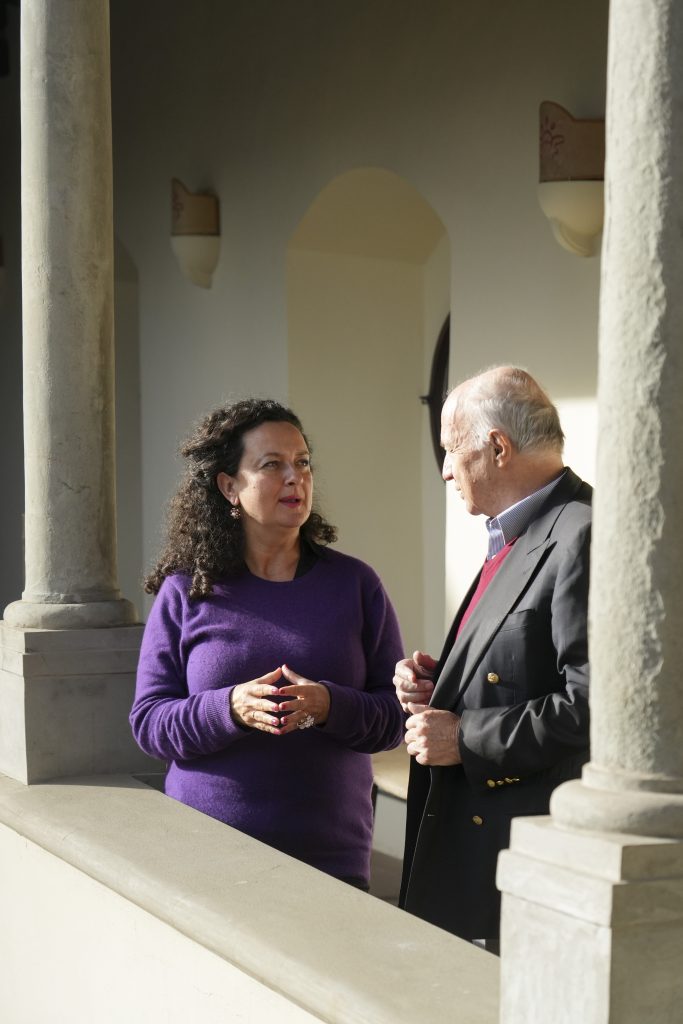
You were born in Rome. After so many years in Florence, do you feel Florentine, too?
My father remained a Roman and never felt like he belonged here. When my brother and I wanted to make him really mad, we would speak in Florentine dialect. I have lived in Spain and then Ireland, where I married my wife Frances and started our family. But more and more, I feel that I have begun to adopt a Florentine spirit and appreciate more of what the city has to offer. Still, I feel Roman in my veins. Every time I arrive in Rome, I exhale and think, ‘I am home’”.
This month, Paola’s Studiolo will include two interviews related to the Colonna family:
November 10: Professor Ramie Targoff
November 11: Lady Vittoria Colonna

